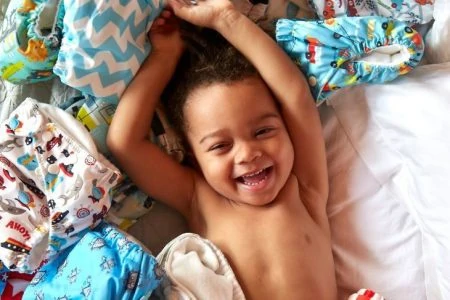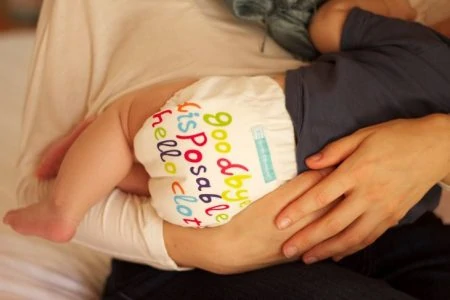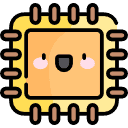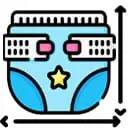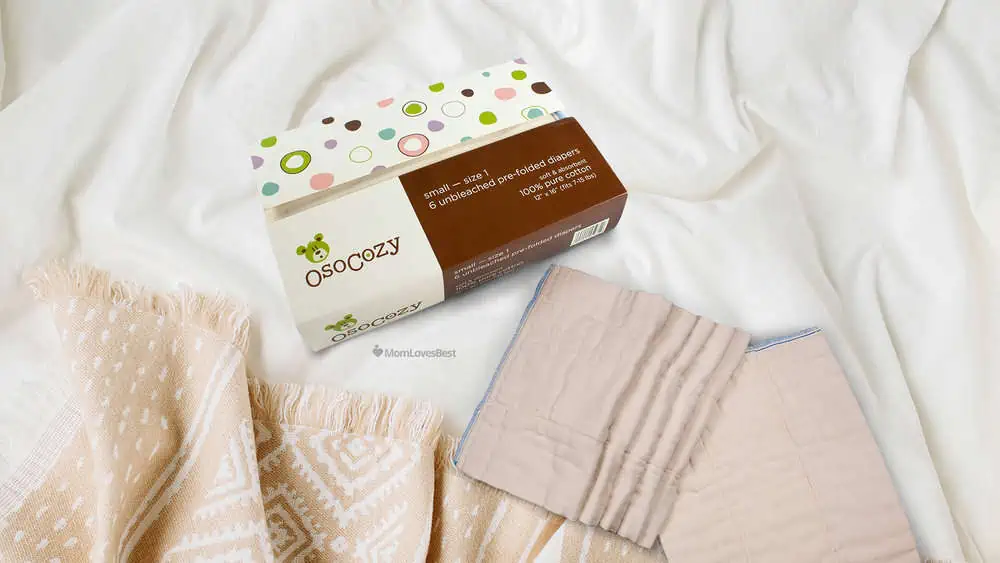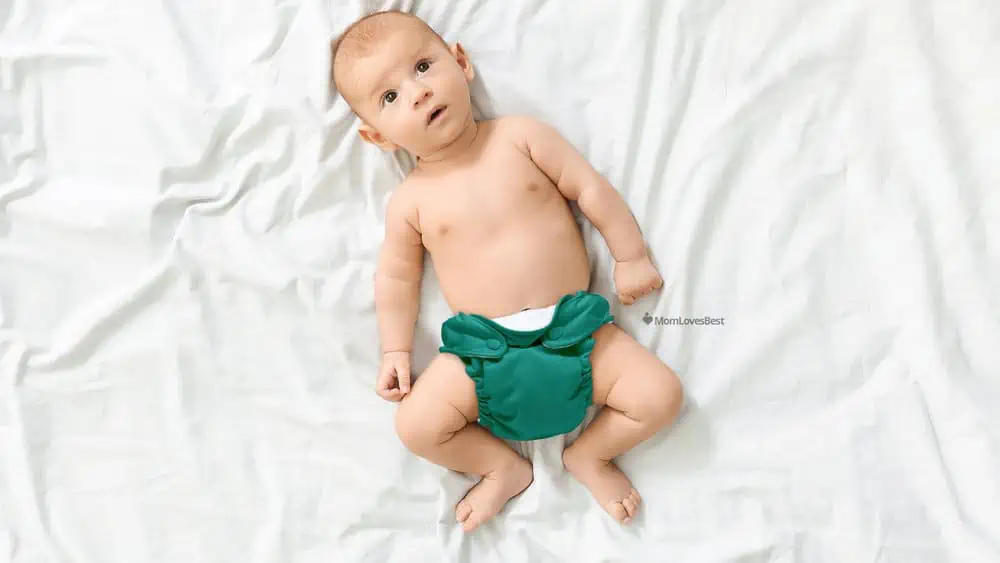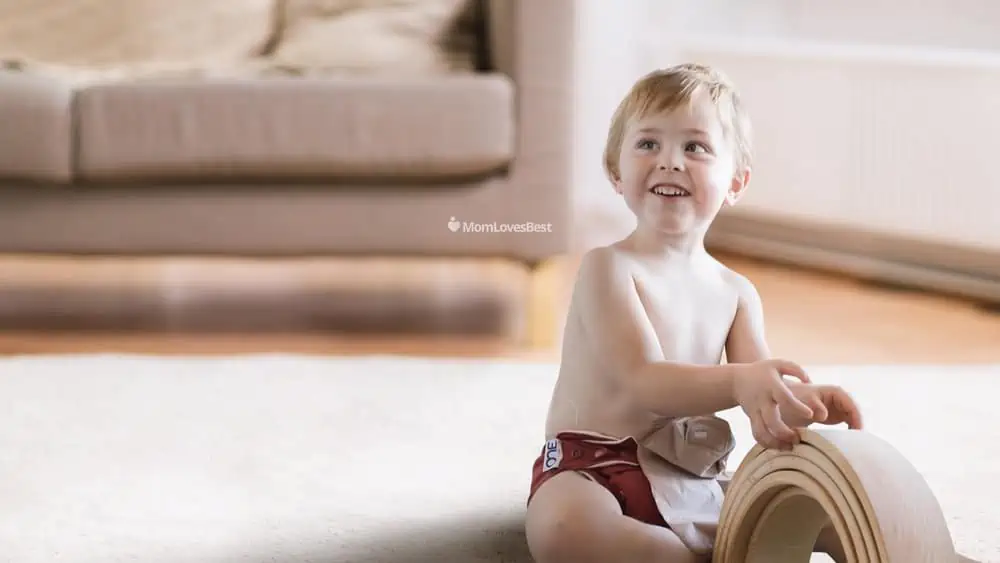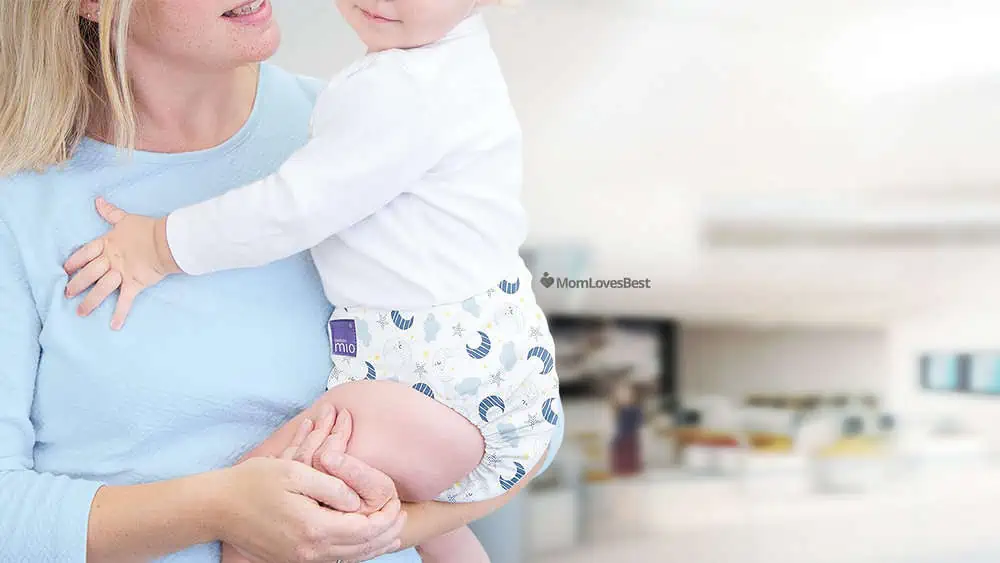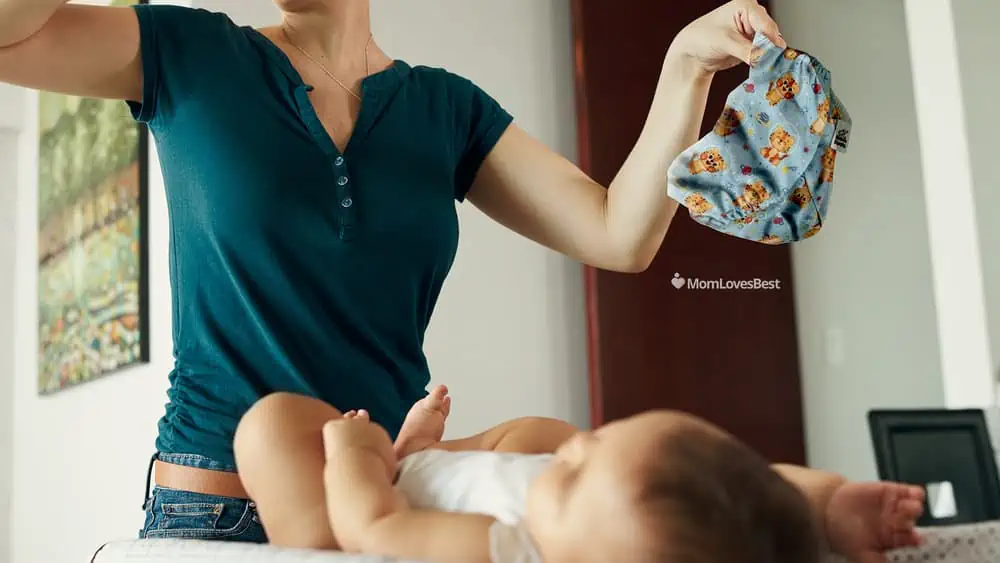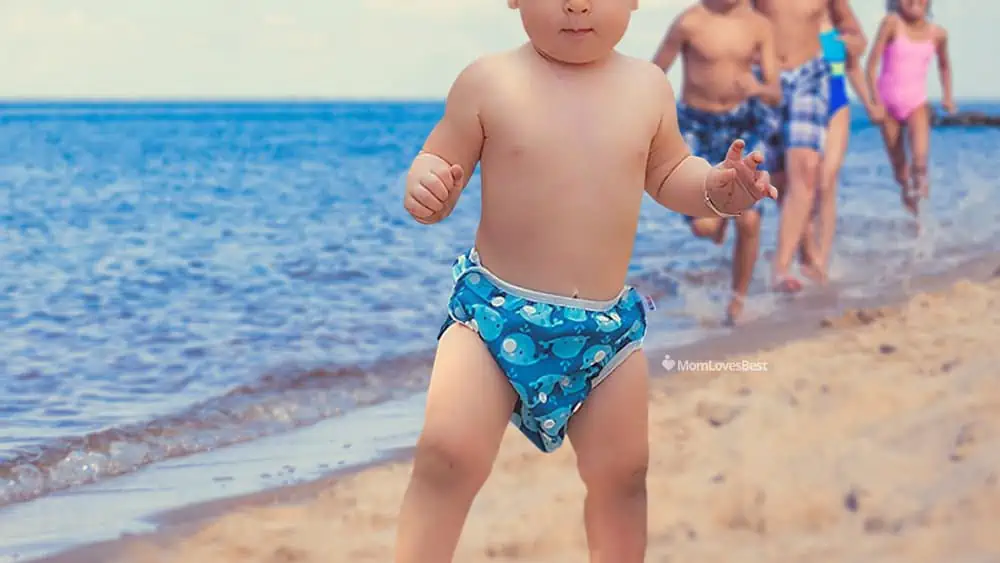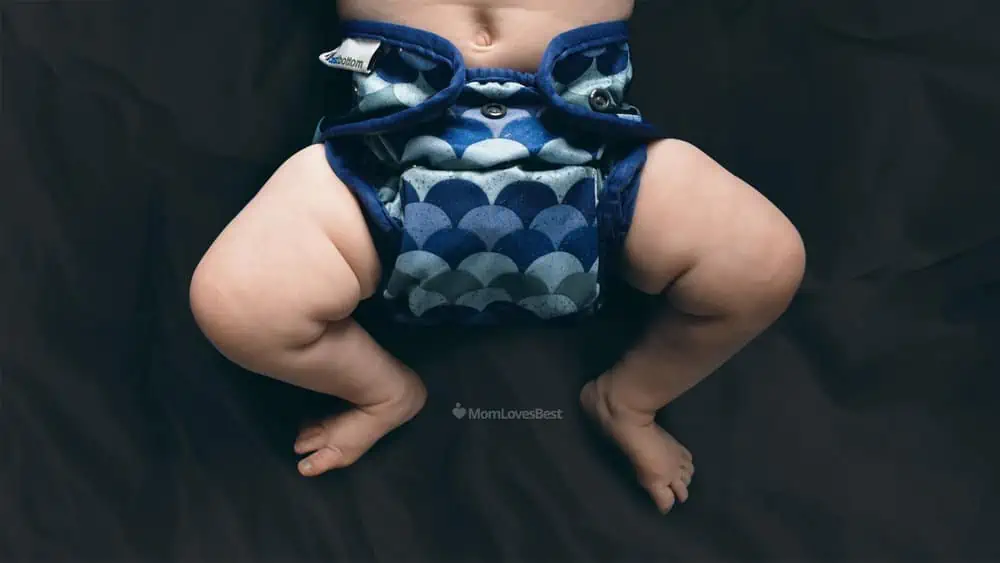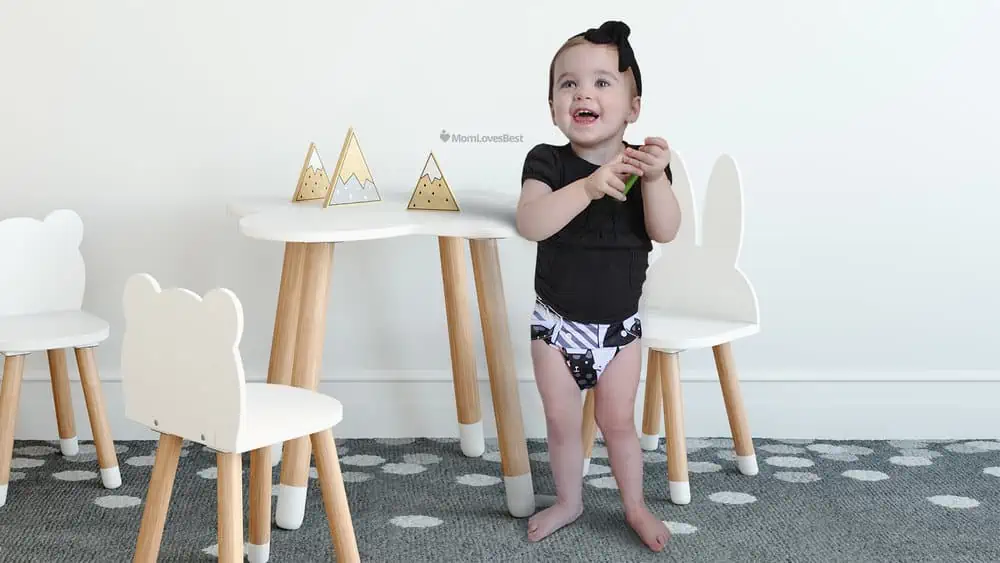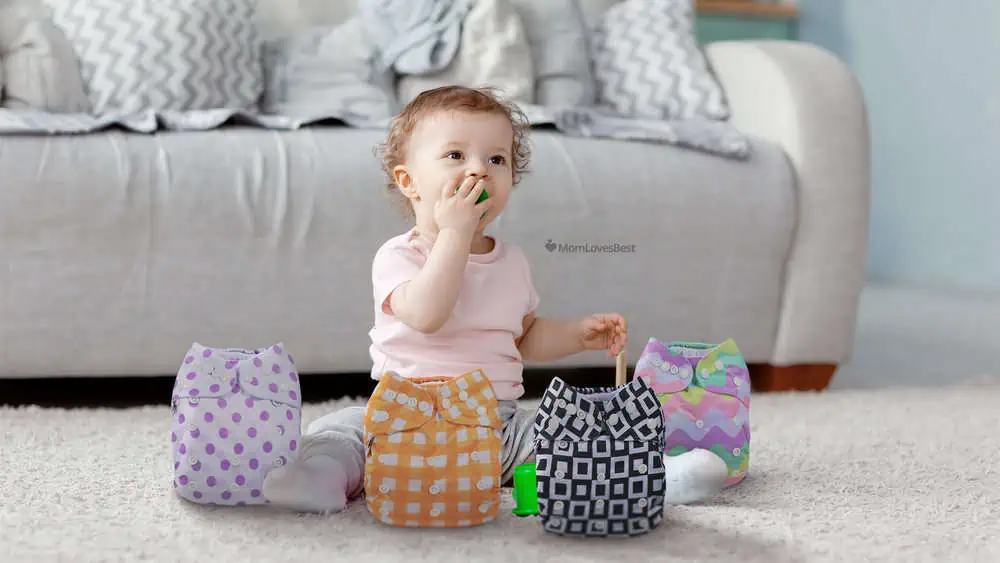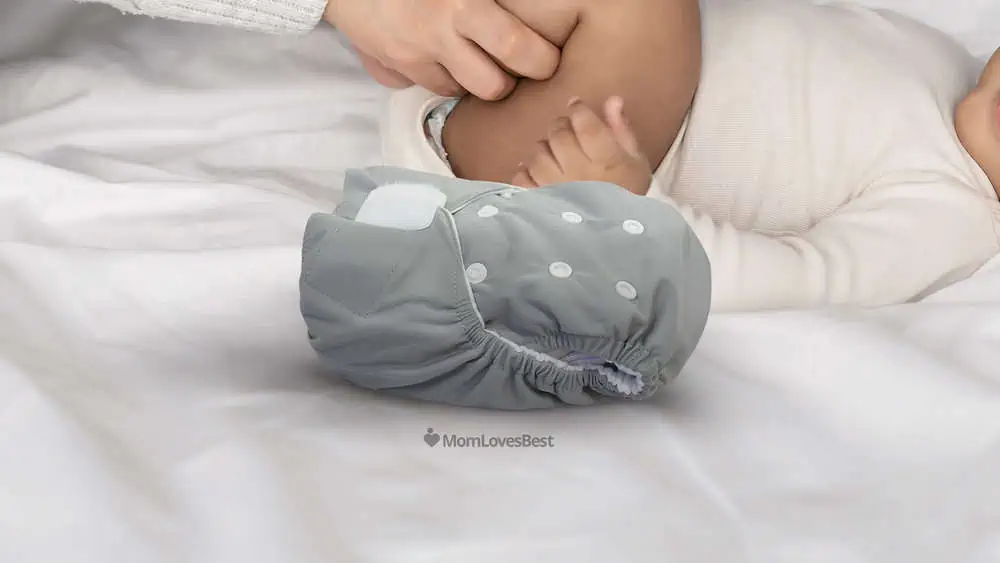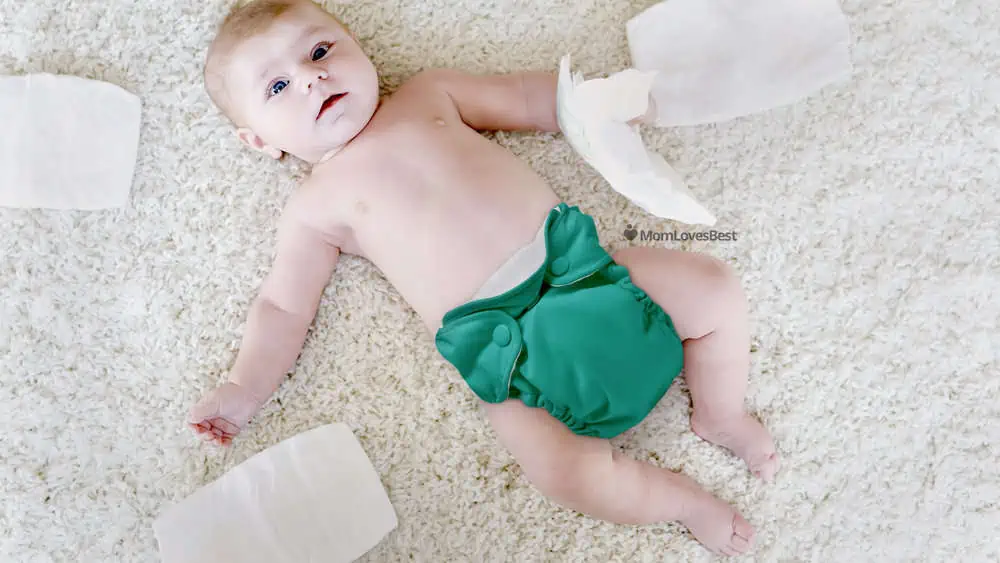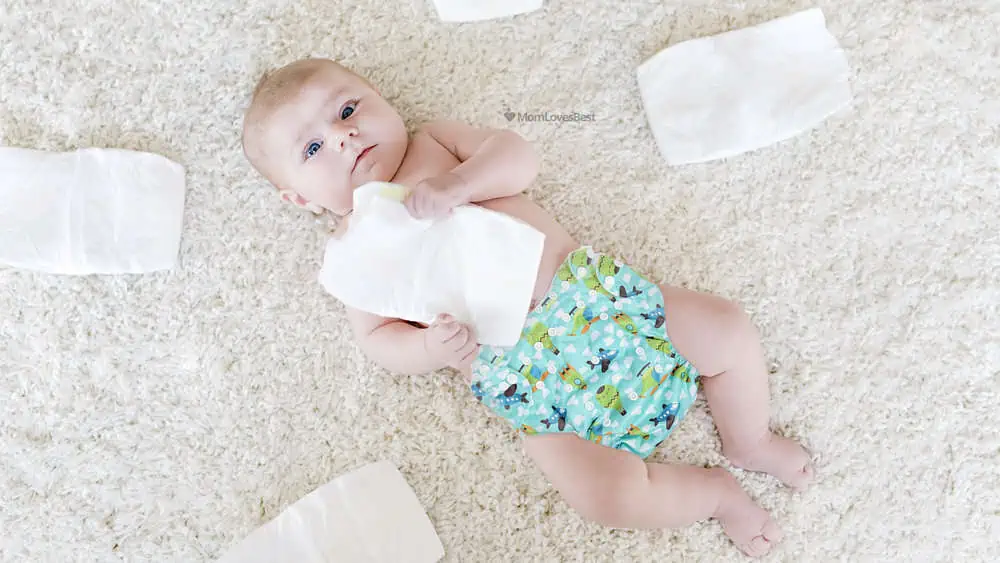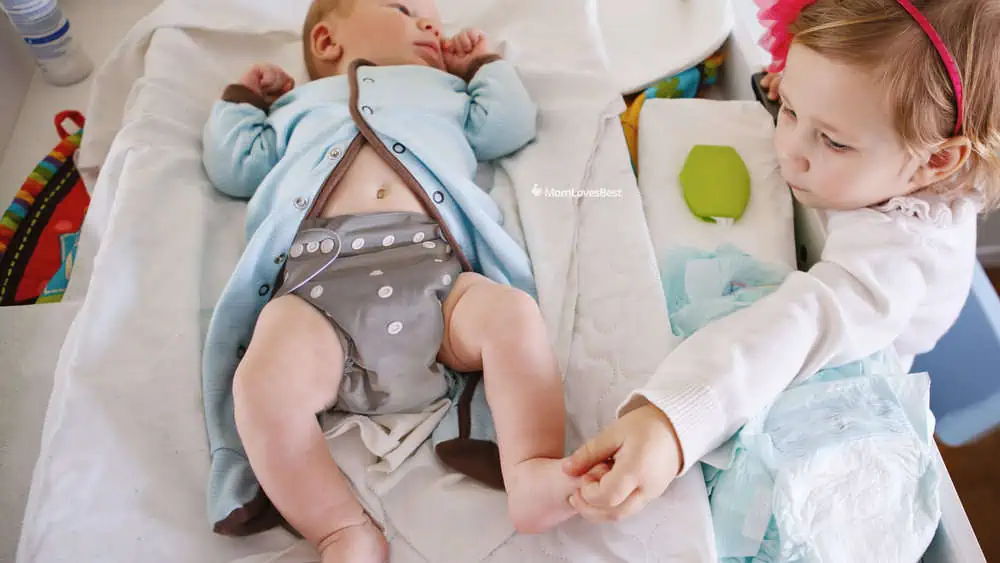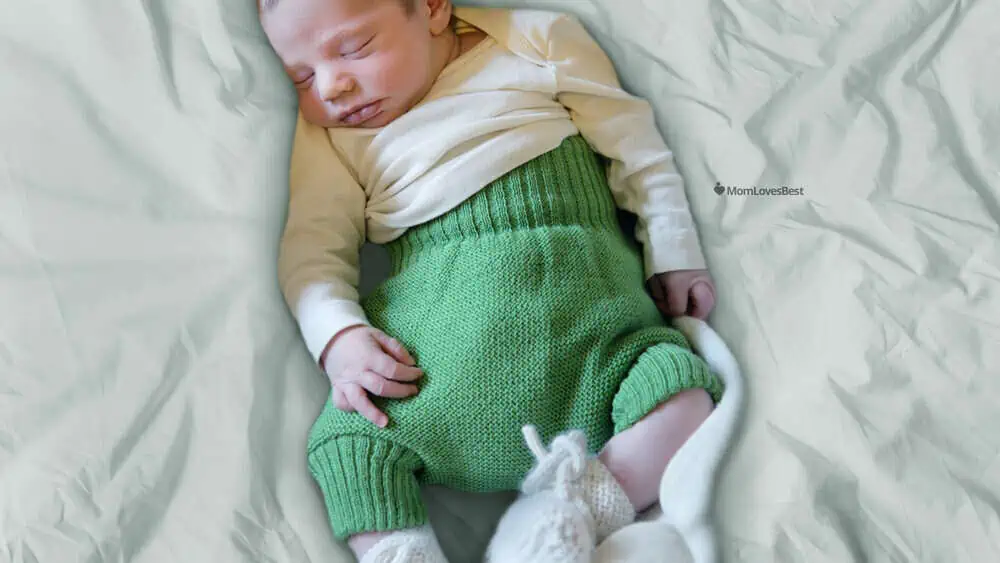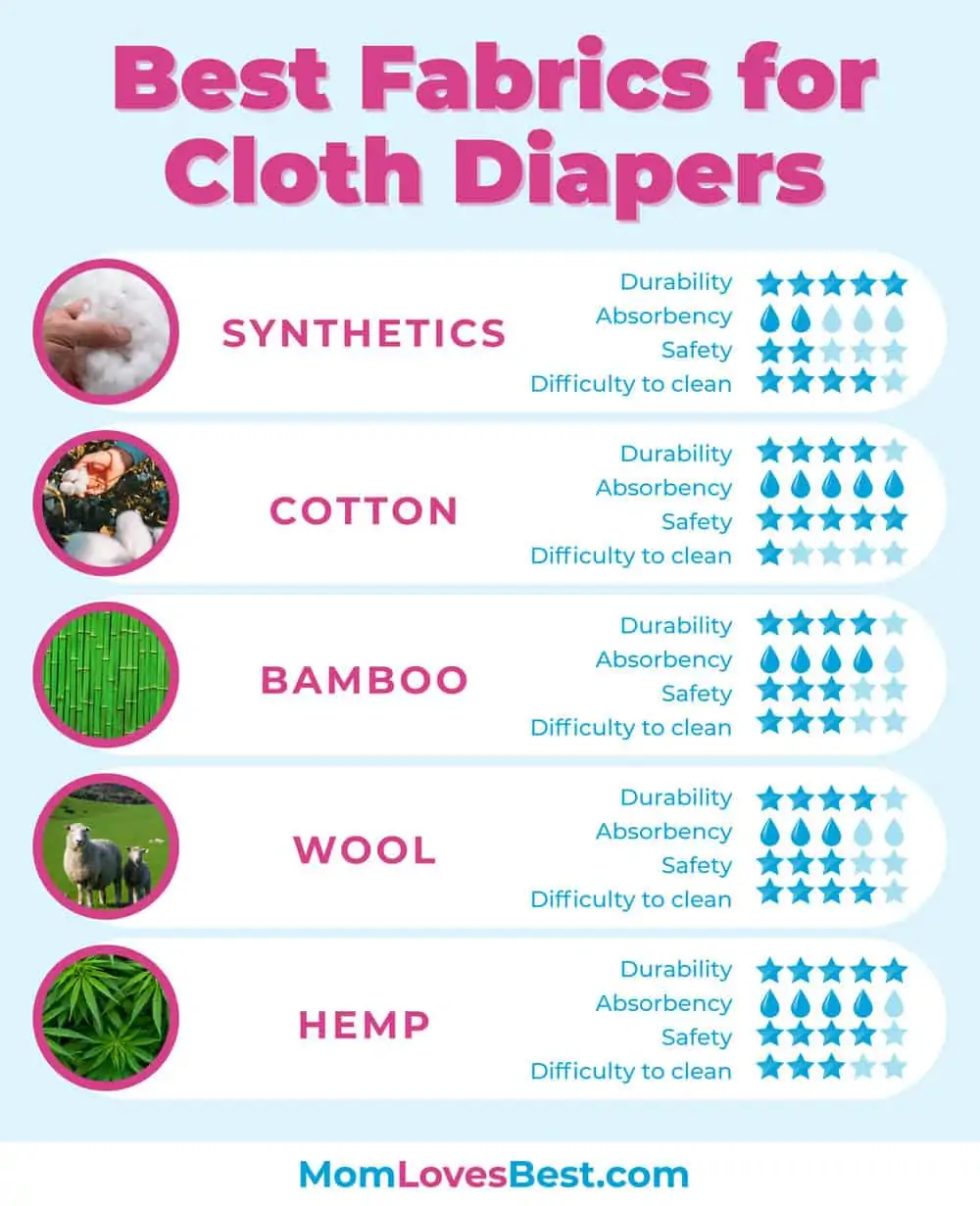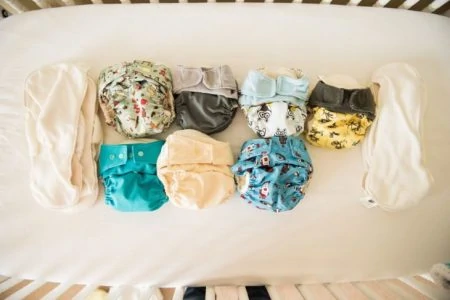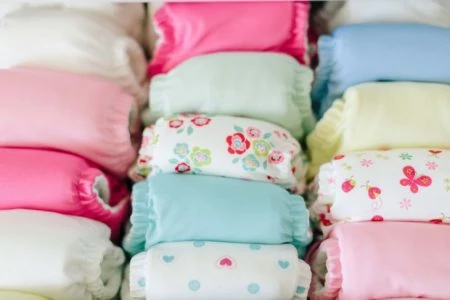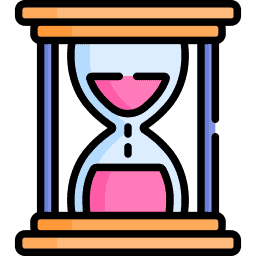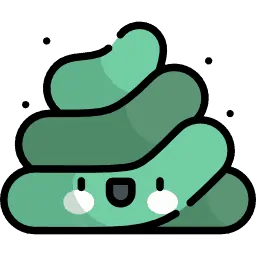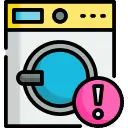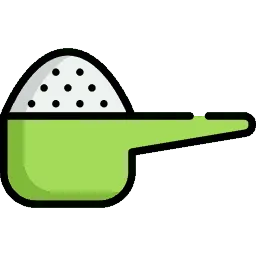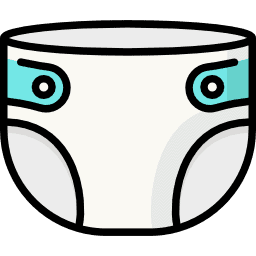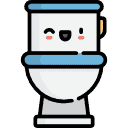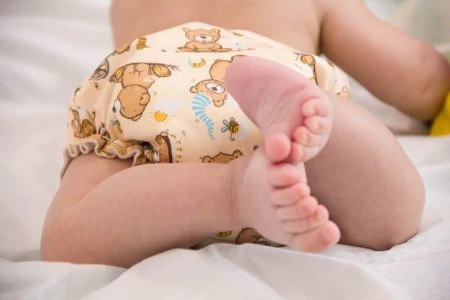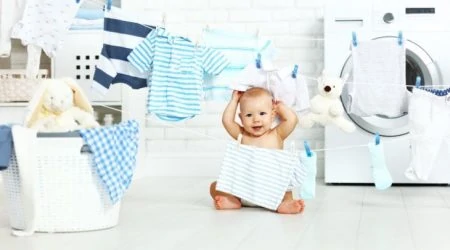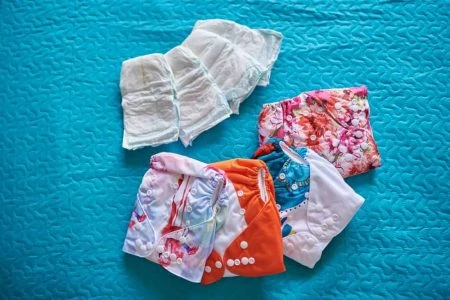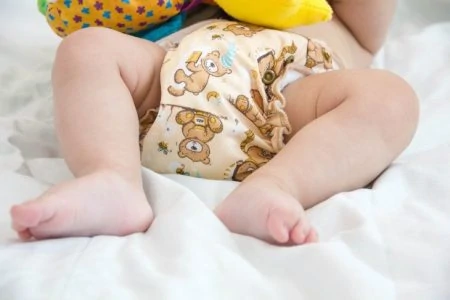Cloth diapers can feel intimidating. Between the specialized lingo, the washing routines, and the sheer number of brands, it is easy to feel overwhelmed before you even start.
But here is the secret: it isn’t as hard as it looks. Most parents get the hang of it quickly and realize they actually prefer cloth over disposables. You save money, you control what touches your baby’s skin, and you never have to make a midnight run to the store for diapers again.
We have spent years testing, snapping, stuffing, and washing to find the truth about modern cloth diapering. We will walk you through the basics and share our top picks to help you build a stash that works for your family.
- Super absorbent, soft, & durable
- Budget-friendly option
- Excellent leak protection
- Exceptionally soft and durable
- No extra prepping
- Incredibly absorbent
- Extra waterproof layers
- One bamboo inserts per diaper
- Great value for money
Reasons to Consider Cloth Diapers
Cloth diapers have come a long way since the safety pins and rubber pants of the past. Modern cloth is effective, cute, and practical. Here is why many parents are making the switch.
- Save serious cash: This is the biggest draw. You can easily save over $1,000 by using cloth, especially if you reuse your stash for a second child. Plus, quality diapers have good resale value.
- Chemical-free comfort: Cloth diapers are free from the gels, fragrances, and dyes found in many disposables. This natural breathability is often better for reducing diaper rash.
- Eco-friendly impact: Disposable diapers take hundreds of years to decompose in landfills. Using cloth keeps thousands of pounds of waste out of the trash and protects our waterways.
- Potty train faster: Cloth doesn’t have the super-absorbent polymers that make disposables feel dry instantly. Your toddler feels the wetness, which helps them connect the sensation to the action and aids in early potty training.
- The cute factor: We can’t ignore the aesthetics. Fluffy bums in colorful prints are adorable and make for great photos.
Different Types of Cloth Diapers
Before you start buying, you need to know the lingo. There isn’t a “right” type, but there is usually a type that fits your lifestyle best. Many parents mix and match systems.
Here are the seven most popular styles you will encounter.
Prefolds
This is the classic, economical choice. A prefold is a rectangle of layered cotton, usually thicker in the middle. You fold it around your baby and secure it with a Snappi or pins, then place a waterproof cover over it. Later, you can just tri-fold them and lay them inside a cover like a pad.
Pros
- Incredibly cheap and durable.
- Easy to wash and sanitize.
- Doubles as excellent burp cloths or cleaning rags later.
Cons
- Requires a separate waterproof cover.
- Wrapping and pinning has a slight learning curve.
- Not as intuitive for babysitters.
Flats
Think of what your great-grandmother used. Flats are large, single-layer squares of fabric that you fold into a diaper shape. They are the most basic system but highly effective when paired with a cover.
Pros
- Cheapest option available.
- Easiest to wash and dry (great for handwashing).
- Always fits perfectly because you fold it to size.
Cons
- Folding takes time and practice.
- Requires pins or a Snappi fastener.
- Needs a separate waterproof cover.
Covers
Covers are the waterproof shell you wear over absorbent diapers like prefolds, flats, or fitteds. They are typically made of PUL (polyurethane laminate), but you can also find fleece or wool options.
Pros
- Wipeable interior allows reuse between changes.
- Budget-friendly since you need fewer covers than inserts.
- Usually have “gussets” (extra elastic) for great leak protection.
Cons
- Must be purchased separately from the absorbent part.
- Some brands can feel bulky depending on the insert used.
AIO (All-in-One)
AIOs are the closest thing to disposable diapers. The absorbent inner layers are sewn directly to the waterproof outer shell. You put it on, take it off, and wash the whole thing. No stuffing or folding required.
Pros
- Easiest for day care and grandparents.
- Trim fit (less bulk).
- One-step changes.
Cons
- Takes longer to dry since layers are attached.
- More expensive per diaper.
- Harder to deep clean if wash issues arise.
AI2 (All-in-Two)
AI2s are a hybrid system. You have a waterproof shell and snap-in inserts. When the baby wets, you snap out the dirty insert, wipe the shell, and snap in a clean one.
Pros
- Less laundry (you reuse the shell).
- Inserts dry quickly.
- Versatile options for absorbency.
Cons
- Snap compatibility varies by brand.
- If the poop gets on the cover, you have to change the whole thing anyway.
Fitteds
Fitteds are shaped like a disposable diaper but made entirely of absorbent cloth. They have elastic legs and waists but are not waterproof. You must wear a cover over them.
Pros
- Bulletproof absorbency (great for nights).
- Excellent at containing blowouts.
- Gentle elastics.
Cons
- Requires a cover to be waterproof.
- Bulky due to layers of fabric.
- Takes a long time to dry.
Pockets
This is the most popular modern style. It consists of a waterproof shell with a “pocket” sewn inside. You stuff absorbent inserts into the pocket. The inner layer wicks moisture away, keeping the baby feeling dry.
Pros
- Customizable absorbency (add more inserts for night).
- Inners usually have a “stay-dry” feel.
- Dries quickly since parts separate.
Cons
- Must be stuffed before use.
- You have to remove the dirty insert before washing.
- Must change the entire diaper every time.
Buying Guide
Once you know the types, narrow down your choices by looking at these three factors.
Product Reviews
We have tested the top brands to find the best absorbency, fit, and value for your family.
OsoCozy Unbleached Prefold Cloth Diapers
Best Prefold Cloth Diapers
OsoCozy prefolds are a staple in the cloth diapering community for good reason. They are durable, incredibly soft, and arguably the most cost-effective way to diaper a baby. They come in two sizes, allowing you to get a precise fit without the bulk of “one-size” systems.
These are made from unbleached Indian cotton. “Unbleached” means they are a bit softer and more durable than treated cotton, but it also means they contain natural oils. You will need to wash and dry them on hot at least 2-3 times before using them to strip those oils and “quilt” the fabric up for maximum absorbency.
Once prepped, they are workhorses. You can secure them with a Snappi fastener under a cover for a bomb-proof fit, or simply trifold them and lay them inside a cover for a quick pad-fold. When your baby outgrows them, they make the best cleaning rags you will ever own.
Pros
- Extremely affordable system.
- 100% natural cotton against the skin.
- Very easy to wash and sanitize.
- Versatile; use as burp cloths or changing pads.
Cons
- Significant shrinkage after prepping (this is normal).
- Requires a waterproof cover.
- Folding has a learning curve.
Our Ratings
Lil Joey All-in-One Cloth Diapers
Best Cloth Diapers for Preemies
Most “One-Size” diapers claim to fit from birth, but they rarely fit a fresh newborn well. Enter the Lil Joey. This AIO is designed specifically for preemies and newborns ranging from 4 to 12 pounds.
It features a clever “snap down” front that creates a dip to protect the healing umbilical cord stump, a feature usually only found in disposables. The best part is the “double gusset” system. It has an inner barrier specifically designed to contain liquidy newborn poop, saving you from constant outfit changes.
These are All-in-Ones, so there is no stuffing or folding. Just snap it on and go. Because they are tiny, they do grow out of them quickly, but they are fantastic for those first few months.
Pros
- Perfect fit for tiny legs and waists.
- Umbilical cord snap down.
- Inner gussets contain newborn blowouts effectively.
- No stuffing required.
Cons
- Short lifespan; baby outgrows them fast.
- Inner gussets can be tricky to clean poop out of.
Our Ratings
GroVia O.N.E. Cloth Diapers
Best Cloth Diaper for Heavy Wetters
If you have a baby who floods their diaper, the GroVia O.N.E. is your solution. The name stands for “Outlast, No prep, Easy,” and it lives up to the hype. It is one of the few diapers capable of handling overnight wetting right out of the package.
The magic is in the hidden absorbent layer and the two snap-in soaker pads. You can use one pad for day use or snap both together for a super-absorbent night solution.
My favorite feature is the closure system. It comes with snaps and a removable Velcro strip. You can use the Velcro for easy changes, but if the Velcro wears out (or your toddler learns to rip it off), you can just remove it and use the snaps underneath. It extends the life of the diaper significantly.
Pros
- Incredible absorbency; great for nights.
- Closure system offers both snaps and Velcro.
- No prepping required; absorbency is high immediately.
- Materials are soft and durable.
Cons
- Can look bulky on smaller babies.
- Higher price point per diaper.
Our Ratings
Smart Bottoms 3.1 Organic AlO Cloth Diapers
Best Cloth Diapers for Sensitive Skin
Smart Bottoms offers a premium All-in-One made with 100% certified organic cotton. There is no synthetic polyester touching your baby, making this the top pick for sensitive skin or eczema-prone babies.
The design features a long “tongue” style insert attached at one end. This allows the diaper to wash clean easier and dry faster than traditional AIOs. You simply fold the tongue to put the absorbency where you need it, front for boys, middle/back for girls.
Be aware: natural fibers contain natural oils. You must wash this diaper 6-8 times before it reaches full absorbency. It is annoying, but the payoff is a super trim, chemical-free diaper that holds a ton of liquid.
Pros
- 100% Organic Cotton interior.
- Very trim fit; fits under skinny jeans.
- Adjustable absorbency zone based on folding.
- Made in the USA.
Cons
- Requires extensive prepping (washing) before use.
- No “stay-dry” layer, so baby feels the wetness.
Our Ratings
Bambino Mio AIO Cloth Diapers
Best Cloth Diapers for Day Care
The Bambino Mio Miosolo is the most user-friendly diaper on this list. It uses sturdy Velcro tabs, making it as easy to put on as a disposable diaper. This makes it perfect for day care providers or reluctant grandparents.
It is technically an All-in-One, but it has a unique “pocket” feature. The absorbent core is attached but stuffs inside a pocket. This means you can easily boost it with extra inserts if you need more absorbency. Plus, the pocket has small loops to help you pull the wet core out without touching the messy bits.
The prints are vibrant and fun, and the fabric stays soft wash after wash. Just remember to secure the laundry tabs before washing so the Velcro doesn’t snag your other clothes.
Pros
- As easy to use as a disposable.
- Fast drying for an AIO.
- Pocket allows for added boosters.
- Super soft “stay-dry” top layer.
Cons
- Velcro wears out faster than snaps.
- Can be bulky on smaller infants.
Our Ratings
Mama Koala Bamboo Cloth Diaper
Best Cloth Diapers for Any Age
Mama Koala is a favorite in the budget-friendly pocket diaper category. These come in 6-packs with incredibly cute, often limited-edition prints. They are a “One-Size” pocket diaper, fitting most babies from 8 to 35 pounds thanks to a highly adjustable 3×3 snap grid on the front.
The interior is a soft suede cloth that wicks moisture away, keeping the baby’s bum dry. The waterproofing (PUL) feels durable, and the leg elastics are gentle but effective.
What sets this bundle apart is the bamboo inserts. Many cheaper brands come with microfiber, which is prone to compression leaks. These bamboo inserts hold more liquid and are less bulky, giving you better performance for the price.
Pros
- Excellent value 6-pack bundle.
- Bamboo inserts perform better than microfiber.
- Huge variety of fun prints.
- Stay-dry interior lining.
Cons
- You have to stuff the pockets after every wash.
- Snaps can be tricky for new users to figure out.
Our Ratings
Alva Baby Swim Cloth Diapers
Best Cloth Swim Diapers
Disposable swim diapers are expensive and do not actually hold pee, they are just there to catch poop. Alva reusable swim diapers do the exact same job but can be washed and reused all summer long.
The interior is a polyester mesh that cleans up easily (solids usually plop right off). The waist and legs are adjustable via snaps, so they grow with your baby. Since they don’t have absorbent padding, they won’t weigh your baby down in the pool.
Note on sizing: Swim diapers need to be tight to be effective. If you are between sizes, check the measurements carefully, but remember that a loose swim diaper is a dangerous swim diaper!
Pros
- Saves money over disposable swimmers.
- Cute prints replace the need for swim trunks.
- Easy to clean mesh interior.
- Adjustable snaps for longevity.
Cons
- Sizing can run small.
- Remember: These do not absorb pee (by design).
Our Ratings
Best Bottom Regular/Bamboo Cloth Diaper Inserts
Best All-in-Two Cloth Diaper
Best Bottom uses a brilliant “All-in-Two” system. You have a wipeable waterproof shell and sized inserts that snap into it. When the baby wets, you unsnap the dirty insert, wipe the shell clean, snap in a fresh insert, and reuse the shell. This means less laundry and a much smaller diaper bag.
The inserts come in different sizes (S, M, L) so you get a trim fit at every stage, rather than folding down a massive one-size insert. They also offer hemp and bamboo options, which are incredibly absorbent for their thinness.
The double-leg gussets on the cover are legendary for containing messy poops. It is a fantastic system for parents who want the trimness of a disposable with the benefits of cloth.
Pros
- Less laundry (reuse covers).
- Double leg gussets prevent leaks.
- Very trim fit.
- High-quality materials made in the USA.
Cons
- You have to buy larger inserts as baby grows.
- Covers and inserts are sold separately.
Our Ratings
Babygoal Cloth Diapers Washable Pocket
Best Pocket Diapers
Babygoal offers a fantastic entry point for parents wanting to try pocket diapers without spending a fortune. This set usually includes 6 diapers and a mix of microfiber and bamboo inserts.
The “grey” interior lining is a nice touch, it doesn’t show stains as easily as white interiors and feels dry against the skin. The pocket opening is wide enough for easy stuffing, and the included bamboo inserts add a nice boost of absorbency compared to standard microfiber.
These are standard “China Cheapies” (a term of endearment in the cloth world), meaning they are mass-produced and affordable. While the PUL might not last through 3 kids like a premium brand, they are absolutely effective and get the job done for a fraction of the price.
Pros
- Great price for a starter stash.
- Grey interior hides stains.
- Includes bamboo boosters.
- Durable snaps.
Cons
- Pocket stuffing takes time.
- Fit can be bulky on newborns.
Our Ratings
Anmababy 6 Reusable Pocket Cloth Diapers
Best Cloth Diapers for Squirmy Babies
Anmababy offers a flexible hybrid pocket system. You can stuff the insert inside the pocket like normal, or lay it on top and snap it in. This snap-in feature is great for active babies because the insert won’t bunch up or shift around as they crawl and cruise.
The inserts provided are 5-layer bamboo charcoal. They are dark grey, which means zero staining issues, and they are quite absorbent. The hip snaps (an extra snap on the waist wing) help prevent “wing droop,” keeping the diaper secure even on skinny waists.
It is a great mid-range option that balances cost with nice features like the hip snaps and bamboo charcoal inserts.
Pros
- Snap-in inserts prevent bunching.
- Bamboo charcoal hides stains.
- Hip snaps improve fit on active babies.
- Good value pack.
Cons
- Leg holes can be tight on chunky thighs.
- Charcoal fleece can be prone to compression leaks if totally soaked.
Our Ratings
Thirsties Natural All-in-One Cloth Diaper
Best Cloth Diapers for Beginners
Thirsties is a beloved US brand known for quality. Their Natural AIO is a powerhouse. It uses hemp and organic cotton, a blend that offers high absorbency without bulk.
The design features two “soaker pads” sewn at the top. This allows water and air to flow between layers in the wash, getting them cleaner and drying them faster than other AIOs. Because they are natural fibers, compression leaks are rarely an issue.
They are available in both snap and hook-and-loop (Velcro). For beginners, the Velcro version is unbeatable, it goes on exactly like a Huggies or Pampers, making the transition to cloth seamless.
Pros
- Hemp/Cotton blend is super absorbent.
- Flap design speeds up drying time.
- Available in very sturdy Velcro.
- Made in the USA.
Cons
- Takes longer to dry than synthetic diapers.
- Runs slightly small on larger toddlers.
Our Ratings
Kanga Care AIO Cloth Diapers
Best All-in-One Cloth Diapers
This is the “Rumparooz” One-Size AIO by Kanga Care. It is famous for its “inner gusset” technology. Essentially, there are barriers inside the diaper that channel messes to the absorbent core and keep poop from escaping out the legs.
The soak pad is a “6r Soaker” that can be folded in different ways to customize absorbency for boys or girls. It is a very structured diaper that feels bulletproof. The colors are vibrant and the snaps are high quality.
Because of the heavy-duty absorbency and double gussets, it can be a little bulkier than the Thirsties Natural, but for many parents, the leak protection is worth the extra fluff.
Pros
- Double inner gussets are amazing for poop containment.
- High absorbency out of the box.
- Great resale value.
- Durable materials.
Cons
- Bulky fit.
- Microfiber interior can be harder to wash deep clean over time.
Our Ratings
Wegreeco Washable Baby Cloth Pocket Diapers
Best Bamboo Cloth Diapers
Wegreeco has made a name for itself by offering quality bamboo pocket diapers at an affordable price. Unlike many budget brands that use microfiber (which is cheap but bulky), Wegreeco includes bamboo viscose inserts.
The fit is generous, making these a good choice for chunkier babies who might get red marks from smaller brands. The inner lining is soft and stays relatively stain-free.
The bundle comes with a wet bag, which is essential for storing dirty diapers when you are out of the house. It is a complete “starter kit” in one purchase.
Pros
- Bamboo inserts are slim and absorbent.
- Generous fit for larger babies.
- Includes wet bag.
- Great leak protection.
Cons
- Leg elastics can relax over time.
- Standard pocket diaper stuffing required.
Our Ratings
Alva Baby One Size Cloth Diapers
Best Inexpensive Cloth Diapers
If you are on a tight budget, Alva Baby is the answer. You can build an entire stash for the price of a few boxes of disposables. These are simple pocket diapers with a microfiber insert.
While the included microfiber inserts are just okay (you might want to double them up or buy bamboo boosters later), the shells themselves are fantastic. They come in hundreds of prints, fit well, and withstand abuse.
Many parents buy Alvas for the shells and stuff them with old prefolds or flour sack towels to create a cheap, bulletproof system.
Pros
- Unbeatable price point.
- Massive variety of prints.
- Decent quality shells.
- One year warranty (rare for budget brands).
Cons
- Microfiber inserts lose absorbency over time.
- Quality control can vary slightly between batches.
Our Ratings
Disana Wool Overpant Cloth Diaper Covers
Best Overnight Cloth Diapers
Wool sounds intimidating, but it is actually the ultimate cloth diaper hack. Disana wool covers are knitted merino wool pants that you pull over a fitted diaper or prefold.
When “lanolized” (soaked in sheep wax), wool becomes waterproof. But unlike plastic, it breathes. This means it is the coolest option for summer and the most leak-proof option for nights. It can absorb up to 30% of its weight in moisture without feeling wet.
The best part? You only wash them once every few weeks. Unless they get poop on them, you just air them out, and the lanolin neutralizes the urine smell. It sounds like magic, but it works.
Pros
- 100% breathable and natural.
- The best leak protection for heavy night wetters.
- Self-cleaning properties (rare washing needed).
- Soft and comfortable waistband.
Cons
- Hand wash only.
- Requires lanolizing (easy, but an extra step).
- Takes days to dry.
Our Ratings
Best Fabrics for Cloth Diapers
The fabric determines how much a diaper absorbs and how fast it works. Here is the cheat sheet.
Synthetics (Microfiber)
Microfiber is like a sponge, it absorbs fast but can squeeze out easily (compression leaks). It is cheap and durable but should never touch a baby’s skin directly as it is too drying.
Pros
- Cheap and fast-absorbing.
- Durable.
Cons
- Holds odors over time.
- Prone to compression leaks.
- Releases microplastics in wash.
Cotton
The reliable classic. Cotton absorbs quickly and holds on to liquid reasonably well. It is easy to clean and generally stain-resistant.
Pros
- Natural and durable.
- Easy to wash.
- Affordable.
Cons
- Can be bulky if you need lots of layers.
Bamboo
Bamboo is actually a rayon viscose processed from bamboo. It is incredibly soft, trim, and absorbs more than cotton. It feels cool to the touch.
Pros
- Very absorbent and trim.
- Silky soft.
Cons
- Heavy chemical processing is used to create the fabric.
- Takes longer to dry.
Hemp
The thirstiest fabric. Hemp is dense and holds a massive amount of liquid, making it perfect for nights. However, it absorbs slowly, so it is best paired with a fast absorber (like cotton) on top.
Pros
- Highest absorbency.
- Very thin/trim.
- Antimicrobial properties.
Cons
- Stiffens if line dried.
- Slow to absorb (needs a partner fabric).
- Expensive.
Wool
Used for covers. It is breathable, temperature-regulating, and bulletproof against leaks.
Pros
- Breathable (great for rashes).
- Self-cleaning (neutralizes urine).
- Natural waterproofing.
Cons
- Hand wash only.
- Animal product (ethical concerns for some).
How Many Cloth Diapers Will I Need?
If you wash every 2 days (the standard routine), you need about 24 diapers.
- Newborns: 24-36 (they poop constantly).
- Infants (6-12mo): 24 is the sweet spot.
- Toddlers: 15-20 (they hold it longer).
Don’t stress about buying them all at once. Start with a few and build your stash as you learn what you like.
What Else Do I Need?
Beyond the diapers, a few tools make the job 100x easier.
- Wet Bags/Pail Liners: Essential for storing dirty diapers without smells.
- Cloth wipes: If you are washing diapers, throwing wipes in the same load just makes sense.
- Diaper sprayer: Connects to your toilet to blast poop off. A game changer for formula or solid-food poop.
- Cloth-Safe Cream: Standard Desitin/zinc creams can ruin cloth diapers by causing repelling. Use a cloth-safe balm like Grandma Els or utilize a fleece liner.
Cloth Diapering FAQs
Common questions about handling the mess.
The Bottom Line
If you want the most bang for your buck and a system that lasts forever, OsoCozy prefolds are our top recommendation. They are affordable, indestructible, and easy to clean. Yes, there is a slight learning curve to the folding, but after three diaper changes, you will be a pro.
If you have the budget and want convenience, check out the Thirsties Natural AIO. It’s as easy as a disposable but way cuter.
Remember, you don’t have to be perfect. Even using one cloth diaper a day saves 365 disposables a year. Good luck building your stash!
